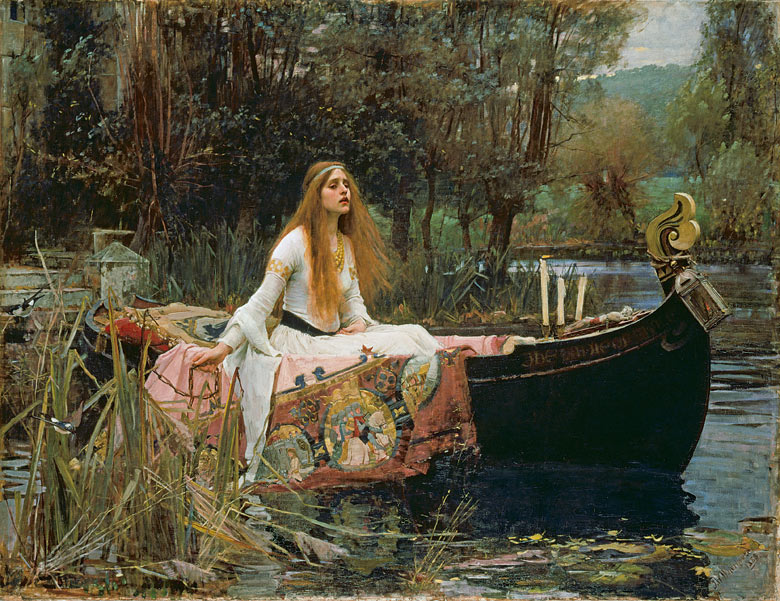
This is one of those wonderful Victorian poems that is so evocative of England's distant pastoral and chivalric age: even if you've never read it you immediately think of all the glorious Pre-Raphaelite paintings that it inspired. The verses are redolent with jewel-like colours, Arthurian references and a sense of romantic foreboding as the cursed Lady of Shallot sits in her tower, looking into her mirror as she weaves her tapestry, and eventually being so overcome by the sight of Sir Lancelot riding along the river bank (singing 'tirra lirra') that she turns to gaze at him. In perhaps the most famous lines in the poem, we learn of the consequences:
'The mirror crack'd from side to side,
"The curse is come upon me", cried the Lady of Shallot.'
We shall be looking forward to a visit to Tate Britain in November, to see the fantastic new exhibition: Pre Raphaelites: Victorian Avant-Garde.